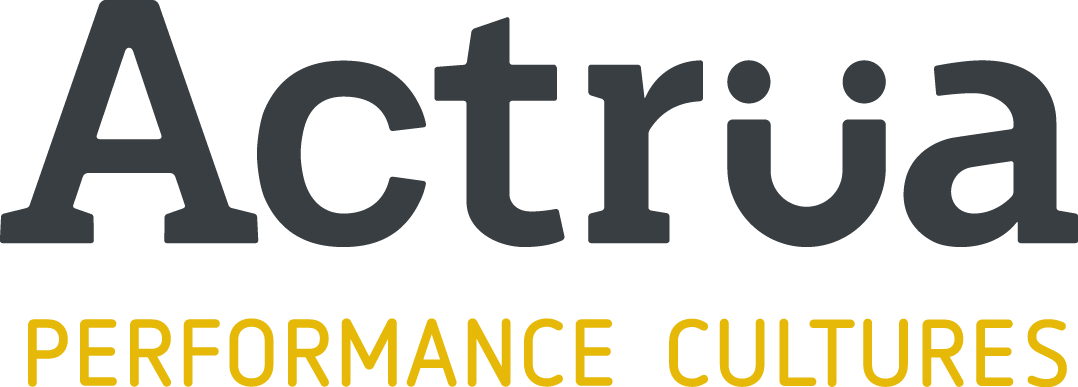It was wonderful news to hear that the team at Act for Kids have been recognised as an Employer of Choice in the 2019 HRD (Human Resources Director) awards. Act for Kids is an organisation dedicated to supporting abused and neglected children. As a long-time supporter and current Ambassador of Act for Kids, I am very proud and humbled to be involved with such a great organisation.
Neil Carrington is the CEO of Act for Kids and has been a leader of the business for over eight years through tremendous growth, performance and change. Neil also holds a PhD in Education Psychology and has extensive experience associated with education, adult learning and leadership development.
I was therefore very pleased when Neil agreed to join me in a conversation about performance culture and leadership to share his experience and practical insights. The conversation was so rich we have decided it is best to share it in two parts. Here is part one.
Andrew: How would you describe the Act for Kids culture?
Neil: There are three words that come to mind if I was to describe the Act for Kids culture. The first is “professional”. People make the assumption that we operate with a lot of volunteers, and we certainly do when running large fundraising events. But could you imagine if you were to arrive at a hospital for gall bladder surgery and you were told that you had a volunteer Surgeon and a volunteer Anaesthetist. We are very serious about what we do and how we go about delivering services. Our people are highly professional and highly qualified. We can’t pay astronomical wages, but we do pay them well and they are highly professional.
The second word is “care”. Our culture is a caring one. We are dedicated to supporting abused and neglected children and their families. So, people genuinely care about what they do. The flipside of that is we genuinely care about our people.
I once had someone tell me that you should leave your personal problems at the front door, there is no place for them at work. Well, I really dislike that statement. I don’t want cardboard cut-outs working for me. I want whole people. That means I take on your sick Mum. I take on your child winning their swimming race. I want the whole human-being working for me. I believe that then manifests itself in a caring culture. They will look after their colleagues, they will look after our clients. That way the organisational culture continues to thrive.
It means you are not just maintaining the status quo, but you are prepared to run experiments in the margins.
The third word I use to describe our culture is “thriving”. When I arrived here nearly nine years ago we had around 60 staff. We have over 400 now. One of the challenges about culture is how to maintain that organisational DNA as you grow and as you have multiple sites. That is an ongoing challenge. I like the word thriving. Whereas surviving means you are just treading water, and perhaps even going backwards. Thriving means you have healthy growth. A healthy churn. Bringing new people into the culture and hearing what they have to say and infuse them into all the good things that we have happening. It also means that you are not just maintaining the status quo, but you are prepared to run experiments in the margins. There is a real richness to that.
Andrew: You like to use the term “for purpose” instead of “not for profit”. Why is that?
Neil: Yes, I often get into healthy debates regarding this with some management educators because they continue to refer to our sector as “not-for-profit”. Sure, it is technically correct. But to me not-for-profit doesn’t capture the type of organisation we need to be. We do everything that an ASX listed company does, except distribute profits to shareholders.
You can’t run residential facilities for vulnerable kids in Cape York and not be running a highly professional business. You must be laser-like in your standards and practices. Can you imagine working with the most vulnerable people in society? They have already been traumatised. We are working in the most remote parts of Australia. We have children in pyjamas in those residential facilities. What could go wrong? Therefore, we must be highly professional about everything that we do. That is why I am passionate about the term “for purpose”, because it is a business and it is a business that focuses on helping vulnerable kids.
Without a margin, there is no mission.
I worked for the Mater Hospital for over six years and one of the great lessons I learnt there was that “without a margin there is no mission”. I have been criticised over time, perhaps less now. But in the early days they would say “Neil, you are very money focused” and I would say “absolutely”. Because if we don’t have the money, we can’t help the children. If we don’t have the money, we can’t employ the best staff. Is it about the money? Yes, it is about the money because then we can deliver upon our purpose.
I believe you need to be able to crystallise a “for purpose” statement in 20 words or less. Ours is “The prevention and treatment of child abuse and neglect.” That is our purpose. What is our vision? A vision to me is what would you see happening if you delivered on the purpose? Our vision is “That all kids have a happy and safe childhood”. Is that going to happen next Wednesday? No, that is an aspirational vision. But we also have an operational vision which says we will help 50,000 kids this year. Last year we assisted 42,000 kids, and that represented an increase of 17% on the previous year. That is an important KPI. Some people are surprised that we have KPIs. Absolutely we do, because this is a business and it is a “for purpose” business.
Andrew: As CEO, what role do you play?
Neil: There are a number of things a CEO must do if they are going to create a high-performance culture, which should be the primary aim.
Firstly, it is about getting clear on the purpose. That is one of the key roles of the CEO. To help the organisation get clarity of purpose. I use the phrase, “You need to be laser-like. Less is more”.
I am sometimes engaged in consulting work to support organisations with their strategic planning process and I find that most organisations want to do lots of stuff. Too much. This is just human nature and most high achieving people want to do lots of stuff. That is admirable, but less is more. So, it is important to be laser-like and focus in on your purpose.
I feel that once the CEO has the clarity around purpose, their next priority is to get clarity on the strategic pillars. What are the big strategic pillars you want to focus in on? This is where culture comes in. Most strategic plans will have industry related KPIs, most will have something about physical resources, usually a financial metric and then possibly some fuzzy HR metric. My approach is to make People and Culture one of the strategic pillars.
For Act for Kids, we are very clear on our strategic pillars. The first and central pillar is our service delivery to vulnerable kids. The next pillar is about money. We need the dollars to deliver on our purpose. The “margin for mission” I mentioned earlier. We also absolutely need the right people and the right culture. If we get that right, then it will do amazing things with our kids. The fourth is then “telling our story”. It is important to tell our story because we can get so focused on delivering the services, that we forget to tell people what we do. We don’t have an advertising budget. Some people think we are a theatre group from Canberra. We need to explicitly tell our story.
I take people to our remote operations and share some of the stories. And some of those are not easy stories. They truly understand what really important work it is that we are doing. It helps the money come in, but it also helps the people come to us. They want to be part of what Act for Kids does to help the vulnerable and abused kids in our society. This is the reason I say to people that I have the best job in the world, because I wake up every day and change kid’s lives.
The other important role that a CEO plays is affirming people for what they do. I think a Chief Executive Officer needs to be a Chief Affirmation Officer. It may sound a little corny. I’m not talking about happy clapping type of praise. I’m talking about taking a moment to say “Are you clear on what you have achieved in the last quarter. That is just gob-smacking what you have done”. That just lifts people and takes them to new places. I don’t do it in a manipulative way. It is just really important and people truly value it.
They want to know that when they have come to work they have made a difference.
In my experience there are typically three things that are consistently identified in employee surveys as being most important to people. Firstly, they want to be financially rewarded. No. 2 they want access to a pathway of growth and development. They don’t all want to be the boss, but they want to know that that are learning and growing. But the third one which is exponentially higher all the time, is that people want to be affirmed for what they do. They want to know that when they have come to work they have made a difference. It doesn’t matter if they are making widgets or saving babies. It is to be affirmed for what they do, and I feel good leaders do that.
Andrew: How do you balance the investment of time and resources between business operations (ie customer delivery) and culture building?
Neil: I think this is a cracker of a question Andrew.
It is about the leadership – management dichotomy that I talk about. We all need to know how and when to lead, and how and when to manage. You lead people, you manage things.
You have to understand the concept of “helicopter to grass-hopper”.
The way I would explain it is this. You have to understand the concept of “helicopter to grass-hopper”. There are times it is important to get in the helicopter and get up above the organisation. Look at where you are tracking. Where all the component parts are moving. How are those KPIs tracking against where you should be and where you are?
It is a great anecdote as I was just in a helicopter only 2 weeks ago and the perspective is just so different. We were flying over a cane paddock in North Queensland and the pilot did a U-turn. He said, “what do you see down there”? In the middle of the cane paddock was a giant growth of marijuana plants that were completely invisible to the farmer on the ground. Once you got in the helicopter it was very clear. I think that represents the importance of a CEO getting in the helicopter from time to time. Can you stay up there? No way! Sometimes you need to land that chopper and confront that drug crop, get it out of there and get the crop back on track. That is where you need that Grasshopper feel down on the ground. You can communicate with your team and you can delegate.
I think that is a pivotal skill for a CEO. The ability to delegate. Specifically, delegate outcomes not tasks. This is a huge transition for many CEOs when they move from a management paradigm to a leadership paradigm. Understanding how and when to coach. How and when to give feedback. Hand in hand with this is my favourite phrase. You have to be a “disciplined eclectic”. If I ask many people about their leadership style, they will describe one dimension. I believe good leaders are actually disciplined eclectics. It doesn’t mean they are wishy-washy. There are times when you need to be highly directive, highly procedural, but you can’t stay in that dimension. You need to use other dimensions. That is why good leaders know how and when to do what, with whom and in what context. It will vary and it will vary deliberately because leading people is highly contextual and highly personalised.
***
Please keep an eye out for Part 2, coming soon.
As part of the Trek 4 Kids campaign, Andrew will be completing the Three Capes Lodge walk in Tasmania from the 5th to 9th September. To donate click on the link http://www.trekforkids.com.au/three-capes/
Dr Neil Carrington is available for speaking and consultancy. All fees go directly to ‘Act for Kids’ and to date he has raised over $3m in funds for this most worthy cause. Dr Carrington was the Harvard Club of Australia Fellow 2012/2013. He most recently was the Foundation National Director of the Leadership Centre for the Australian Council for Educational Research (ACER). He was the Foundation Director Education for Mater Health Services. He has held senior academic posts at a number of universities and has been on the Board of Brisbane South Bank, Youthrive and the BGW Group. He has presented at over 600 conferences worldwide.








